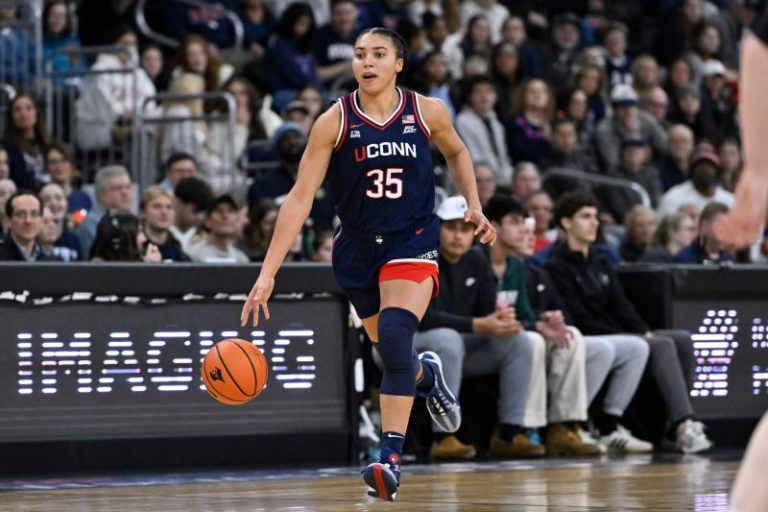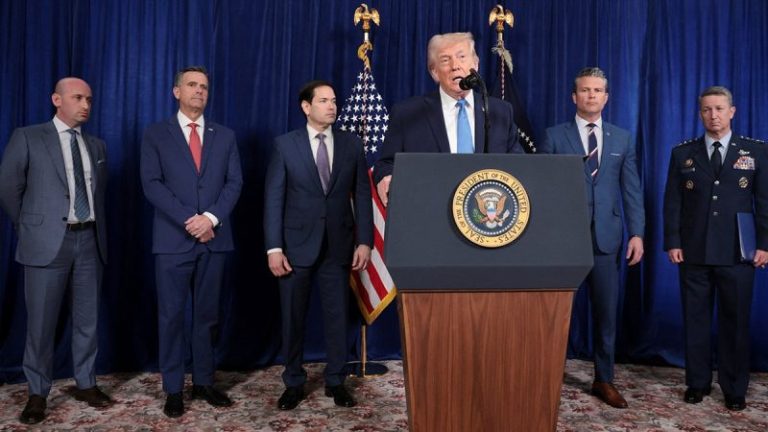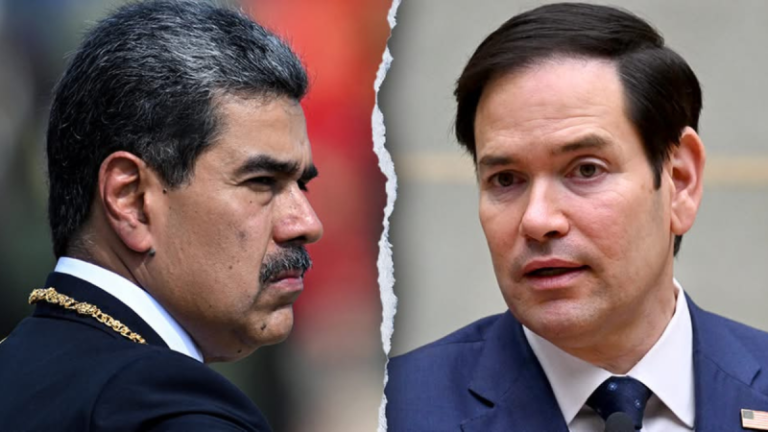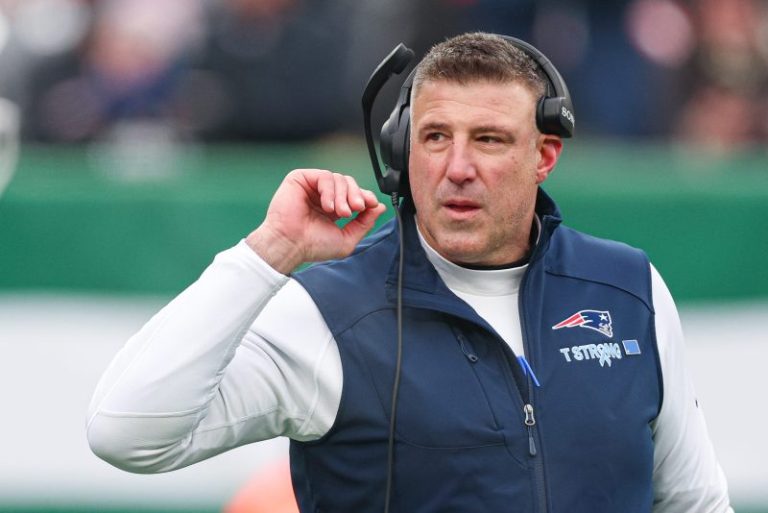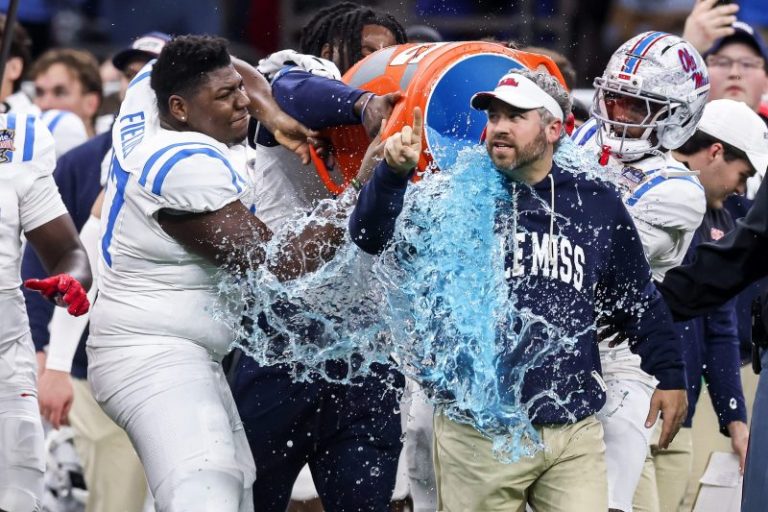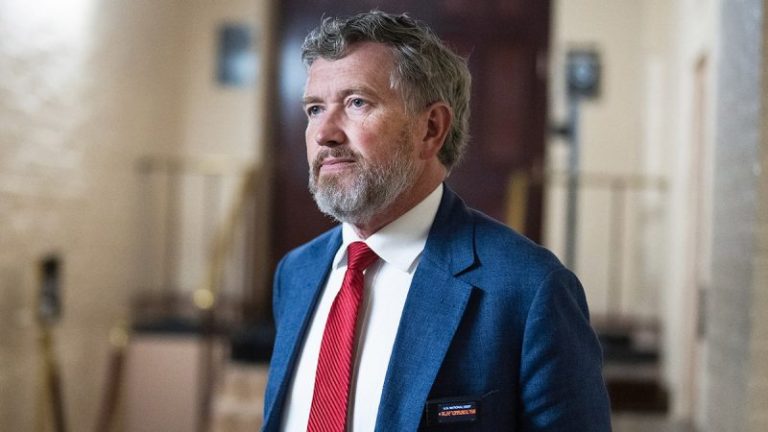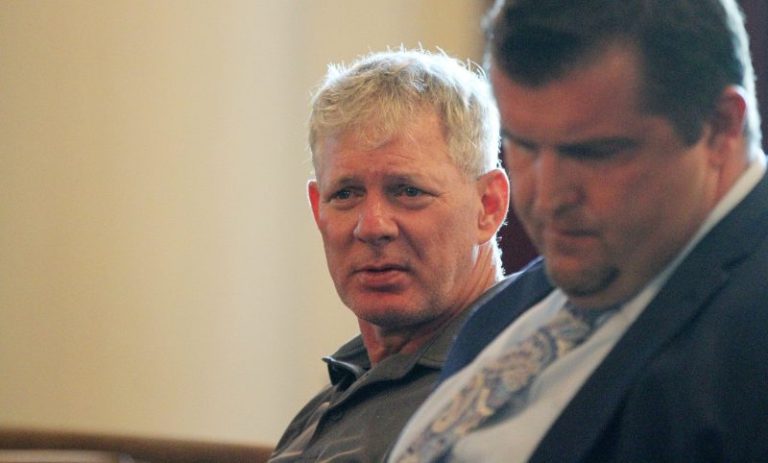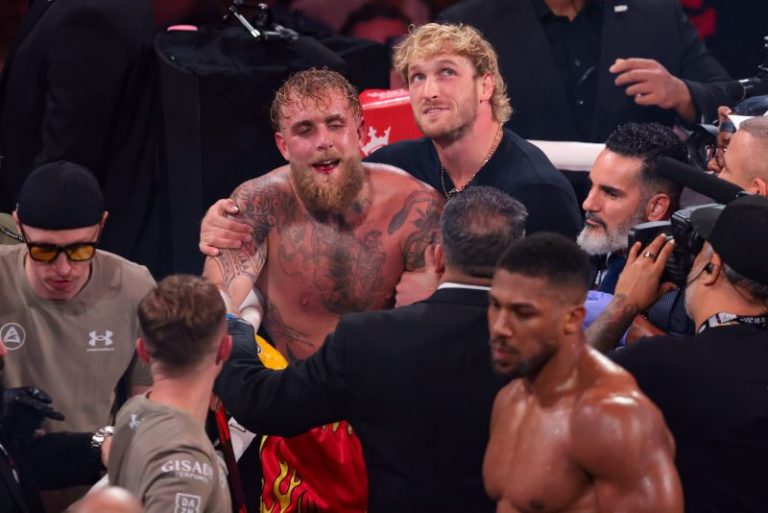
HARTFORD, CT — The UConn women’s basketball team continued its Big East dominance, defeating Seton Hall, 84-48, on Saturday at PeoplesBank Arena.
The Huskies (15-0, 6-0 Big East) have won 53 consecutive games against conference opponents and are on 31-game win streak overall going back to last season’s 12th national title.
UConn starting point guard KK Arnold returned to the lineup after breaking her nose in practice on Tuesday. She had five points, five assists and five steals.
‘In KK’s case, there’s nobody else on the team that will be able to replicate what she does,’ UConn coach Geno Auriemma said. ‘So when you do have her in the game … she does become incredibly valuable as a tone setter. You know that the game is going to start a certain way, that there’s going to be a kind of a frenetic pace to it, that the other team may not be equipped to handle.’
Sarah Strong had 18 points and eight rebounds to lead UConn. Azzi Fudd added 16 points including four 3-pointers. Allie Ziebell had 12 points on four 3-pointers. Jana El Alfy scored 10 to round out players in double figures.
Despite the margin of victory, Auriemma had some notes. The Huskies continued to struggle with turnovers. They had five in the first quarter and 17 for the game.
‘It’s one of the not so perky perks of coaching women’s basketball at UConn, you get a lot of unselfish players,’ Auriemma said. ‘And we watch on a film and (you ask) … ‘Why didn’t you shoot that?’
‘(We’re) trying to do things that are a little bit more difficult than they need to be. So it’s a good problem to have that they want to be very unselfish. There’s a fine line there.’
The Huskies has 20 steals and 35 points off turnovers. The Pirates had 32 turnovers.
Jordana Codio scored 12 points and Savannah Catalon added 11 to lead Seton Hall (10-5, 4-2 Big East).
Third quarter: UConn 67, Seton Hall 26
UConn dominated in the third quarter and is poised to get its 53rd straight victory in Big East play.
Sarah Strong has 18 points and eight rebounds. Azzi Fudd has 16 points including four 3-pointers. Both have given way to backups as the Huskies outscored to Pirates, 29-8, in the quarter.
Since an 11-all tie in the first quarter, UConn has outscored Seton Hall 55-15.
Azzi Fudd starts second half strong
Fudd got the scoring started with another 3.
Halftime: UConn 38, Seton Hall 18
UConn found its offense in the second quarter. The Huskies outscored the Pirates 19-7. Azzi Fudd has 13 points and Sarah Strong 12 points and five rebounds. UConn has 12 steals and 21 points off turnovers.
Mariana Valenzuela has eight points and four rebounds for Seton Hall.
UConn’s Sarah Strong from range
After being relatively quiet in the early going, Sarah Strong hit back-to-back 3s. She now has 10 points. UConn is on a 21-4 run and up 32-15 on Seton Hall.
Azzi Fudd into double figures
Azzi Fudd, who leads the Huskies by averaging 18.1 points a game, has 11 in the early going. She is 4 for 10 from the field including 3 for 7 from behind the arc.
First quarter: UConn 19, Seton Hall 11
The Huskies went on a 8-0 run to end the quarter including a pair of 3s. Azzi Fudd leads the Huskies with 9 points. Sarah Strong has four points and four rebounds.
Huskies struggling from behind the arc
UConn is shooting 3-for-10 from 3-point range with Ashlynn Shade just cashing in. The Huskies hold a 14-11 lead.
We are underway in Hartford
UConn’s missed its first two shots before Azzi Fudd hit a 3-pointer to get the offense going.
Here’s everything you need to know about Saturday’s matchup between UConn and Seton Hall:
What time is UConn vs. Seton Hall women’s basketball?
The UConn Huskies will face off against the Seton Hall Pirates on Saturday, Jan. 3 at 12 p.m. ET at PeoplesBank Arena in Hartford, Connecticut.
UConn vs. Seton Hall: TV, streaming
- Date: Saturday, Jan. 3
- Time: 12 p.m. ET (9 a.m. PT)
- Location: PeoplesBank Arena (Hartford, Connecticut)
- TV: FS1
- Stream: Fubo
UConn starting lineup
Seton Hall starting lineup
UConn knows how to dish it out
The Huskies lead the nation with 24.3 assists per game. UConn has 20 or more assists in its last 13games. Junior KK Arnold ranks second nationally with a 4.69 assist-turnover ratio.
KK Arnold return to the UConn lineup
After sustaining a nasal fracture in practice Tuesday and missing Wednesday’s game, starting point guard KK Arnold is back against Seton Hall.
Seton Hall in the house
The USA TODAY app gets you to the heart of the news — fast. Download for award-winning coverage, crosswords, audio storytelling, the eNewspaper and more.

